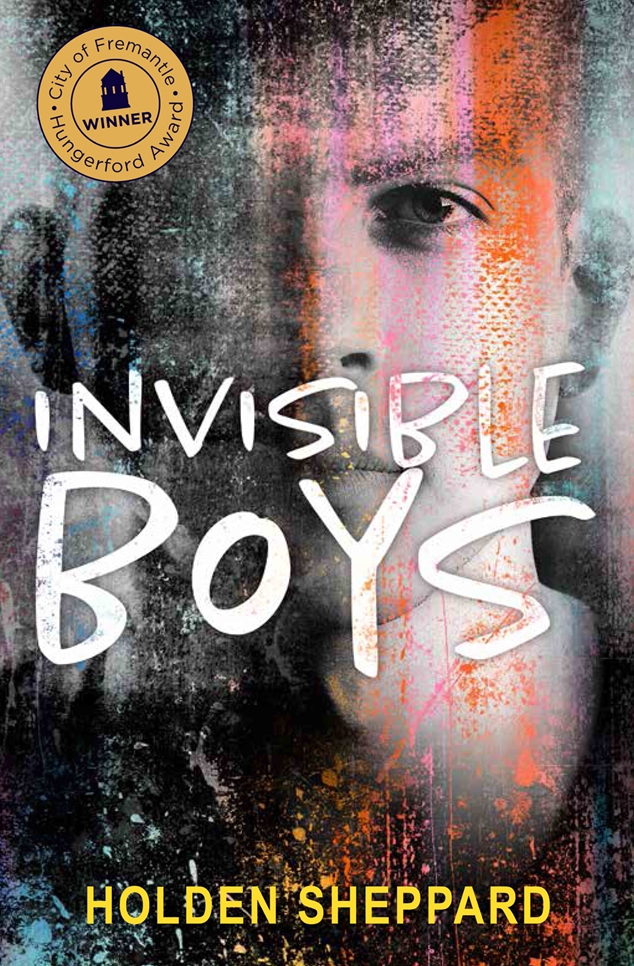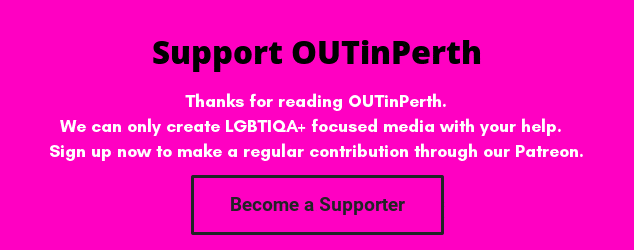 Invisible Boys
Invisible Boys
Holden Sheppard
Fremantle Press
Get ready to clutch your pearls because Holden Sheppard’s Invisible Boys is one hell of a read. Already the recipient of three awards – including the TAG Hungerford Award, which has led to this incredible tale being published – this debut novel is one of those books that only comes around once in a generation. And how lucky are we to be here to witness its breakthrough!
Set in the WA’s sweltering sunburnt redneck region, Geraldton, Invisible Boys charts the coming out of three local lads. There’s the painfully angst ridden emo rocker Charlie, the nerdy and awkward Zeke, and the overtly obnoxious meathead Hammer. There’s also the closeted farm boy Matt who, while only a minor character, becomes a major catalyst in the lives of our three main protagonists.
The story kicks off with Charlie being outed when a Grindr hookup goes awry. What follows is an ode to that small town mentality of “other” equaling “different” and “wrong”. All three of the main characters come up against their own identity struggles in different ways, leading to plenty of conflict and homophobia, both internalised and external.
To delve any further into the plot is to essentially rob the reader of the experience. Needless to say though, virtually all of the characters have personality traits that will make you hate them one moment and then laugh the next. Even Zeke, who is perhaps the most lovable of the three, has moments where you want to clip him across the ear, but ultimately he shines through (for me, at least) as the one character who you find yourself cheering for. Perhaps it’s because he’s the most succinct, emotionally, dropping such beautiful lines as “The brighter you shine on the outside, the darker you burn within”.
You can tell Sheppard is a Gero’ boy, born and raised. The description of the town is incredible, the details perfectly recreating the sweat and dust and aching emptiness. There’s also some beautiful symbolism that runs throughout: purple lupins blaze their against the uniformity of yellow canola; football jerseys are tools of oppressive heteronormativity; and wheels equal freedom. There’s plenty here to enrich a second reading, to tweak out the subtleties of Sheppard’s landscape and how queer spirit reclaims space in a place that is arid with conformity.
There are moments when, as a LGBTIQA+ individual, I found myself rage reading: there are some truly horrible moments of homophobia in this book. To think that a parent would strike their child because that child identifies as queer is something many of us are fortunate to have never experienced firsthand. But it’s here, in Invisible Boys. It’s here in graphic detail, along with a sluice of homophobic slurs, microaggressions and persistent suicidal ideation. It doesn’t make for the easiest reading, but it does make for essential reading (please make sure you read this book when you are feeling strong and safe!).
Ultimately, Invisible Boys is a YA novel, which leads to the pearl clutching part: holy heck… the sex scenes are something else! Which is amazing to read: as a young queer soul, I remember that reading M2M sex in a book meant I had to sneak-read some pretty full on titles that ultimately dealt with topics way beyond my comprehension. But now? Sheppard’s book is the kind of book I wish I had had as a teen, so I knew what to expect when I was ready to have sex. How, like Charlie, I didn’t really feel any different after my first time either.
Fremantle Press should be applauded for including these scenes. Representation is so critical in this day and age. The inclusion of such scenes normalises M2M affection, companionship, love and sex, humanising what we, as teens, are told is taboo. It also offers a real alternative to the celluloid “perfection” that pornography presents, perhaps one of the few places LGBTIQA+ teens can readily access representation thanks to the internet.
Those familiar with Sheppard’s work would have probably read last year’s novella Poster Boy, published as part of Griffith Review’s All Being Equal. This anthology commemorated the same sex marriage vote in all its horror and beauty. In that novella, Sheppard’s prose had an infectious, breathtaking pace. Here, in Invisible Boys, Sheppard maintains a similar pace, albeit one sustained masterfully over 337 pages. Not an easy feat, but Sheppard’s driving narrative pulses bright and bristles with burn and bite.
Eight days after its official release, Fremantle Press have already announced that Invisible Boys is going into a second print run. They said they haven’t seen this kind of response to a book since Craig Silvey’s Rhubarb. That’s some pretty good company for Sheppard to be keeping right there, but I’m going to add another name to the mix: Invisible Boys reminds me, in many ways, of Christos Tsiolkas’ 1995 debut novel Loaded. Both have a ferocious bravery, both open a portal on to lives not often spoken about, and both linger well after the first read, making them both worthy of a re-read.
Invisible Boys won’t be for everyone. But to think that a whole new generation of young queer readers will have the opportunity to see themselves in this book: that’s a powerful thought. Sheppard opens the reader up to how small town life treats LGBTIQA+ youth and, now that he has, maybe this book will start a conversation on how to address small town homophobia. What this book has certainly begun is a brilliant career for one of WA’s brightest literary talents.
Invisible Boys is available now.
Scott-Patrick Mitchell
Do you need some support?
If you are struggling with anxiety or depression, support and counselling are available from:
Lifeline: 13 11 14 or lifeline.org.au
Beyondblue: 1300 22 4636 and www.beyondblue.org.au
QLife: 1800 184 527 and www.qlife.org.au
QLife are a counselling and referral service for Lesbian, Gay, Bisexual, Transgender and Intersex (LGBTI) people.






